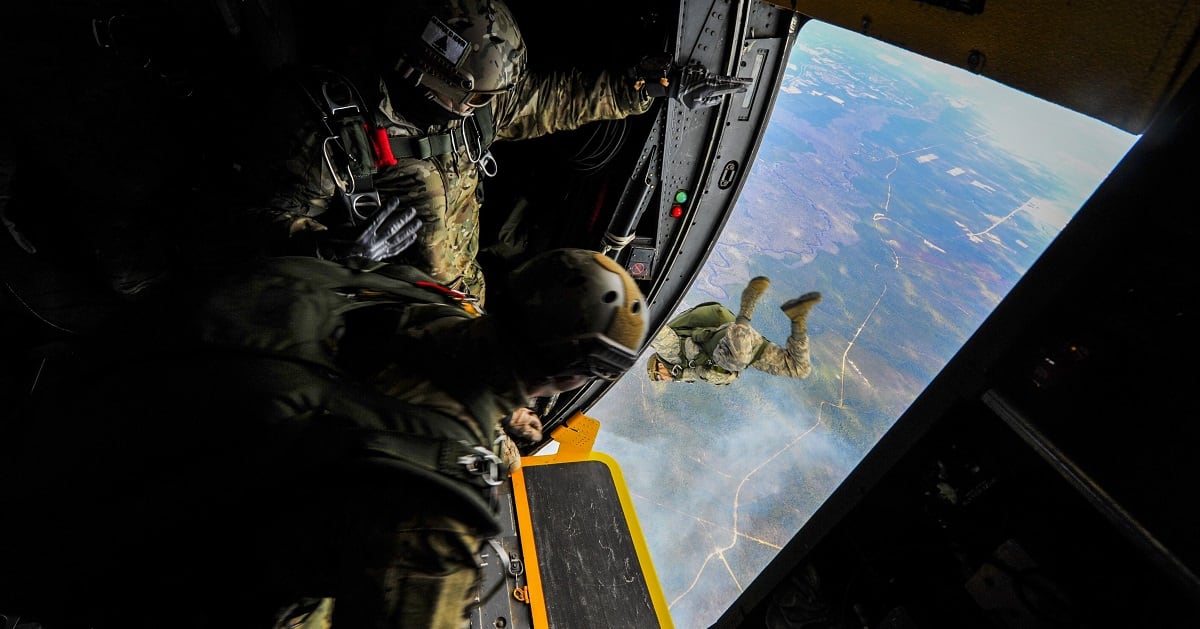Air Force Special Operations Command is once again at a turning point, its commander, Lt. Gen. Jim Slife, said in an interview Sept. 11.
After the attacks exactly 19 years earlier, AFSOC quickly adjusted to help the United States fight wars in Iraq, Afghanistan and elsewhere. Special warfare airmen jumped into action right away — and largely kept fighting for nearly two decades straight.
But AFSOC paid a price for that devotion to duty. As it adopted a culture focused primarily on accomplishing its war-time missions, other requirements slipped, such as training rigor, adherence to standards and oversight of high-risk activities, Slife said earlier this year.
The Nov. 5 death of Staff Sgt. Cole Condiff, a combat controller who was pulled from an MC-130H over the Gulf of Mexico when his reserve parachute accidentally deployed, spurred AFSOC to pause and take stock of what the relentless pace of operations had done to the command.
An investigation into Condiff’s death, released in July, found that the mistake that led to Condiff’s parachute being improperly configured was a common one, and resulted from a “culture of complacency” that had gradually developed. Slife said at the time that the high operations tempo had taken a toll.
Now, as the Air Force shifts to an era of great power competition — and, in all likelihood, reduced budgets — AFSOC is going to need to adjust again, part of a broader shift in how the Air Force operates, and to make the special warfare community more sustainable.
Gen. Charles “CQ” Brown, the Air Force’s new chief of staff, laid out his call for the service to “Accelerate Change or Lose” in a white paper released earlier this month. He is expected to expand on that call in his address to the Air Force Association’s Air Space Cyber conference Sept. 14.
“The AFSOC that we needed [after 9/11] is going to need to be supplanted by the AFSOC we will need for the future,” Slife said in the interview Friday. “We clearly see the future coming at us full speed ahead, so we have to change ourselves before the environment does it for us.”
RELATED

AFSOC was originally built for short-term crisis response and short-term contingencies, Slife said — not sustained combat deployments. But after 9/11, AFSOC was re-geared to sustain single units being deployed for years at a time. One unit, the 17th Special Tactics Squadron, saw no breaks in deployments and combat operations for more than 6,900 days, AFSOC said in an Aug. 31 release. Since first deploying in October 2001, the headquarters and two operational detachments have been in continuous rotation.
Air Force special operations "was really in a supporting role, with niche missions and skill sets that were not found elsewhere in the joint force,” Slife said.
But as he looks to the future, Slife sees AFSOC returning to a role where it provides key specialized mission capabilities to help the broader joint force.
It’s also likely the Air Force will see fewer resources in the years to come than it has enjoyed recently, he said.
“What that means is that we have to stop doing some of the things that we’ve been doing in order to free up our human capital and the limited financial resources we have to do the things that are those high-valued things required for the future,” Slife said.
That doesn’t mean the end of long deployments for AFSOC, he said. But it will have to very carefully choose what it keeps doing, and concentrate on the missions that nobody else can do.
Slife did not say exactly what capabilities AFSOC might drop, but said “there are no sacred cows.” It is looking at its entire portfolio. That could mean divesting platforms, systems or missions that might be needed less in the future, or are too expensive while providing too little value. There also might be some legacy force structures in AFSOC that can now be better done by other elements of the joint force, he said.
As part of a review of manning levels in its specialties, AFSOC has found that some of its core career fields have been “over-specialized.”
“We have specialties that, frankly, have greater capacity, and they can do more things than what we have narrowly described for them,” Slife said.
So, AFSOC wants to create “multi-functional” airmen who can be called on to do more things than their narrowly drawn Air Force specialty codes say they can do. Slife would not say which AFSCs might transition into multi-functional airmen, but said they could include both air and ground airmen, as well as those in both operations and support jobs.
“Airmen typically have the greatest job satisfaction when they feel like they’re making the maximum contribution to the mission,” he said.
Slife has been impressed by how smoothly AFSOC has adjusted to operating in a COVID-19 environment “without really skipping a beat.”
Local commanders were able to keep on top of local conditions and adjusted restrictions on how airmen operated as those conditions shifted on a day-to-day basis, he said.
“Obviously, the safest thing to do would be to stay at home and never leave your house, but that comes at some risk to the mission,” Slife said. “On the other end of the spectrum, the least risk to the mission would be … just continuing to operate the way we always operated. … It’s the elastic response of local commanders to maintain readiness that’s been key to our success.”
Stephen Losey is the air warfare reporter for Defense News. He previously covered leadership and personnel issues at Air Force Times, and the Pentagon, special operations and air warfare at Military.com. He has traveled to the Middle East to cover U.S. Air Force operations.





